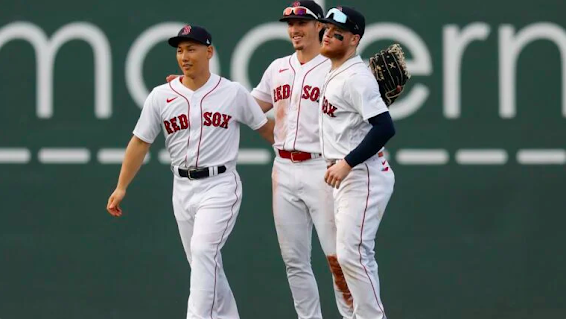MLB’s new schedule will feature less divisional play and more inter-league play, with every team facing every other club each season. Starting this year, clubs will play only 13 games against each of their division rivals, instead of the traditional 19. So, teams will play 24 fewer games against their division rivals and 24 more against teams from the opposing league.
I could see this coming long ago. I’ve been saying for years that MLB will ultimately do away with the two leagues; they are a vestige of a long ago past.
The American league claimed Major League status in the 1901 season, 25 years after the formation of the National League. That’s why they are respectively known as the "Junior Circuit" and the "Senior Circuit.”
The two leagues operated as entirely separate entities, each believing they were superior to the other. To determine who was truly better, the leagues decided to have their two best teams square up against each other in the World Series, which was first played in 1903.
For the first 96 years, the two leagues faced each other only in exhibition games, spring training, the All-Star Game and the World Series.
However, beginning in 1997, inter-league games have been played during each season. That first year, there were 214 inter-league games, followed by 224 in ’98; 251 in ’99 and 2000; 252 from 2000-’12; and 300 games since 2013 (with the exception of 298 in the pandemic-shortened 2020 season). The wall dividing the two leagues was starting to fall.
For nearly a century, the two leagues operated as independent entities, each with its own president. However, following the 1999 season, the American and National Leagues were merged with Major League Baseball, and the leagues ceased to exist as separate business entities. The role of the league president was eliminated. Major League Baseball is now presided over by a single commissioner. More bricks in the wall had fallen.
Through 1999, there were separate National and American League umpires. However, the 2000 collective bargaining agreement between Major League Baseball and the Major League Baseball Umpires Association resulted in all umpires being placed on one roster and working in games in both leagues. The wall between the leagues was now fully crumbling.
Though the AL unilaterally adopted the Designated Hitter in 1973, the NL finally joined them last season. The only remaining difference between the two leagues is now finally gone.
There is no longer any wall, any difference, between the two leagues. At last, they are more like the NFL’s AFC and NFC, the NBA’s Eastern and Western Conferences, and the NHL’s Eastern and Western Conferences.
The next step will be to eliminate the two leagues altogether and move to a full geographical realignment. Under such a plan, teams will play more games against clubs in their regions, regardless of league.
Commissioner Rob Manfred’s has long-desired adding two teams and implementing a geographic realignment of a 32-team MLB that will eliminate the last vestiges of the American and National Leagues you grew up with.
The cities most likely to get an expansion team include Portland, Oregon, Nashville, Tennessee, and Charlotte, North Carolina. There are only seven teams in the West, so it’s hard to envision MLB adding two more in the East. For the sake of discussion, let’s assume that the cities are Portland and Nashville, which already has a name (The Stars), an investment group, a board, and advisors.
We might expect to see eight, four-team divisions under such a realignment. It could look something like this:
Northeast - Red Sox, Yankees, Mets, Blue Jays
Mid-Atlantic - Phillies, Pirates, Nationals, Orioles
Southeast - Stars, Braves, Rays, Marlins
Mid-West - Cubs, White Sox, Brewers, Tigers
Central - Royals, Cardinals, Reds, Guardians
West - Rockies, Rangers, Astros, Twins
Pacific North - Mariners, Portland, Giants, A’s
Pacific South - Dodgers, Angels, Padres, Diamondbacks
The division names are plainly generic. Of course, other names may or will be chosen. And the division makeup may also be different. This is merely a thought experiment. At present, MLB only has 10 teams west of the Mississippi River, which would go to 11 with the addition of a team in Portland. Still, there is an abundance of teams in the Northeast and Upper Midwest, which will make realignment vexing and, perhaps, somewhat odd.
The challenge will be maintaining longterm rivalries, playing up natural regional rivalries (i.e., Cubs and White Sox, Reds and Guardians, etc.) and cutting down on travel. For example, it makes no sense for the Red Sox and Yankees to play the Mariners and A’s more often than the Mets and Phillies, just because the former two clubs are in the American League.
Older fans may howl with discontent and even disgust, but this is no longer your father’s game. We’re in the 21st Century and MLB knows is must change with the times. The two leagues are no longer separate entities; there's no further use in pretending that they are.
A change is coming. Get used to it.






